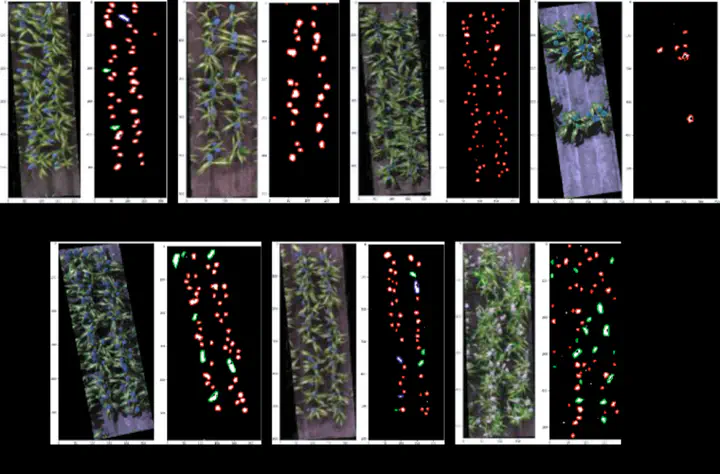Detecting Sorghum Plant and Head Features from Multispectral UAV Imagery

Abstract
In plant breeding, unmanned aerial vehicles (UAVs) carrying multispectral cameras have demonstrated increasing utility for high-throughput phenotyping (HTP) to aid the interpretation of genotype and environment effects on morphological, biochemical, and physiological traits. A key constraint remains the reduced resolution and quality extracted from “stitched” mosaics generated from UAV missions across large areas. This can be addressed by generating high-quality reflectance data from a single nadir image per plot. In this study, a pipeline was developed to derive reflectance data from raw multispectral UAV images that preserve the original high spatial and spectral resolutions and to use these for phenotyping applications. Sequential steps involved (i) imagery calibration, (ii) spectral band alignment, (iii) backward calculation, (iv) plot segmentation, and (v) application. Each step was designed and optimised to estimate the number of plants and count sorghum heads within each breeding plot. Using a derived nadir image of each plot, the coefficients of determination were 0.90 and 0.86 for estimates of the number of sorghum plants and heads, respectively. Furthermore, the reflectance information acquired from the different spectral bands showed appreciably high discriminative ability for sorghum head colours (i.e., red and white). Deployment of this pipeline allowed accurate segmentation of crop organs at the canopy level across many diverse field plots with minimal training needed from machine learning approaches.